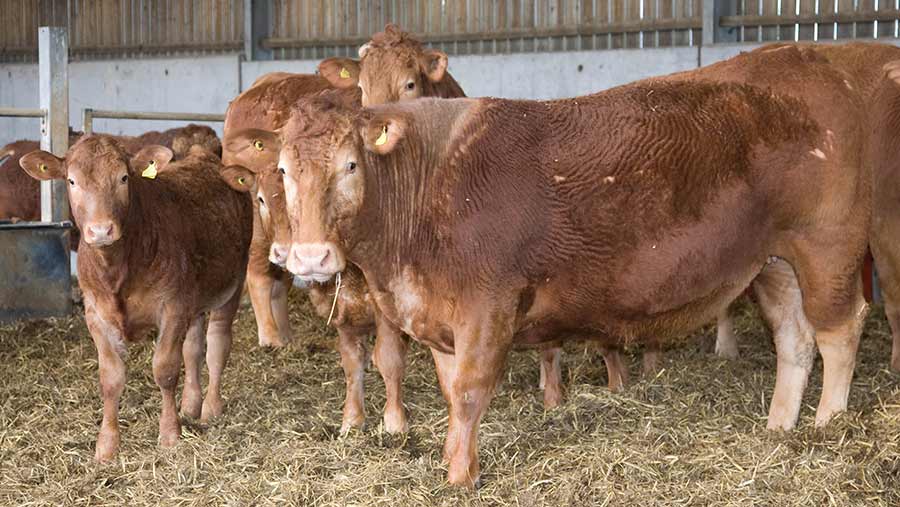Infectious causes of lameness in beef cattle and how to treat them
 © Tim Scrivener
© Tim Scrivener Foot health is less talked about in the beef industry than in sheep and dairy farming, but the financial losses can be just as significant.
Lameness in a beef animal will reduce weight gain and so increase cost of production through longer finishing.
Vet Sara Pedersen, a specialist in cattle health and production, says two common causes of lameness in beef cattle are injury and infection. Two of the main infectious causes are digital dermatitis and foul of the foot.
See also: Step-by-step guide to foot-trimming in beef cattle
Digital dermatitis
- Treat active lesions with a licensed topical antibiotic as advised by your vet, such as oxytetracycline aerosol, which has no withdrawal period for meat entering the food chain
- Leave lesions open to the air and treat repeatedly until healed – a sign of this is when a black scab has formed over the top of the lesion
Foul
- Foul is the only cause of lameness that requires systemic antibiotics, administered at the earliest sign of infection to halt disease progression
- Early treatments have better cure rates, meaning less time and medicines overall
- There are several licensed antibiotics available for treating foul – discuss with your vet which is the most appropriate
Foot-bathing to treat infectious causes of lameness
Where infection levels of digital dermatitis and foul are high, Ms Pedersen recommends regular foot-bathing.
This should be done as frequently as possible, with the aim to disinfect the feet and keep them cleaner.
The foot-bath itself should be 4m long and 70cm wide and have sloping sides to allow every foot to enter the bath.
The sides should be solid to aid cattle flow.
Foot-bath design is important and generally the more times the foot is immersed in the solution, the better – aim for three dunks of each hind foot, which generally requires a foot-bath that is double the animal’s length.
Narrowing the base and having sloping sides ensures all feet enter the bath.
Placing boarding along the sides also aids cattle flow.
